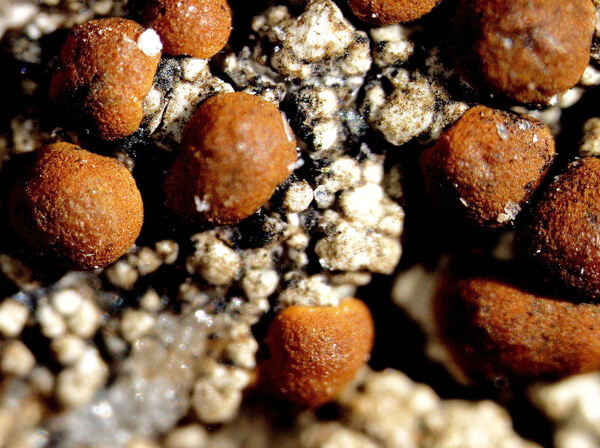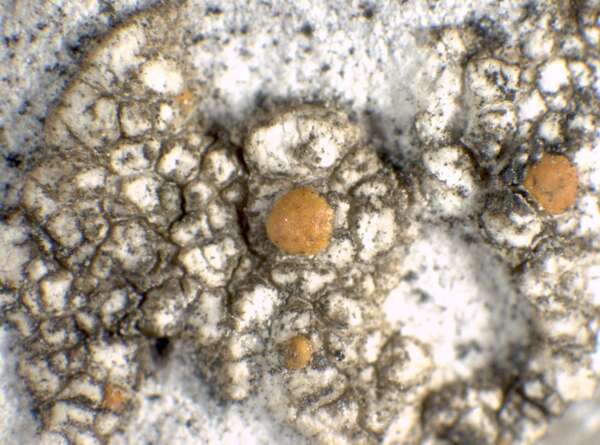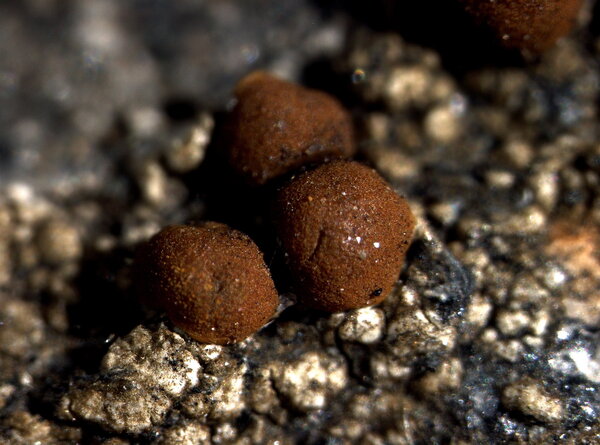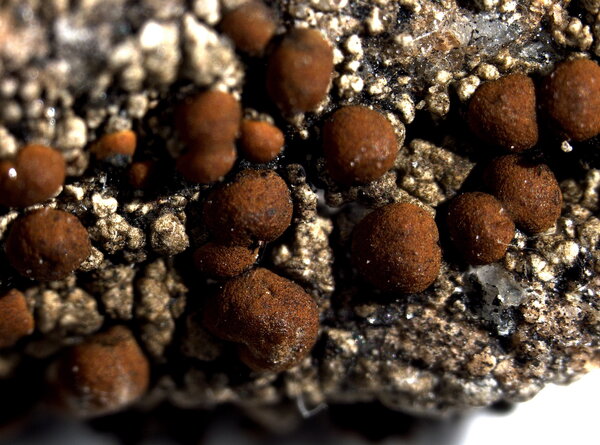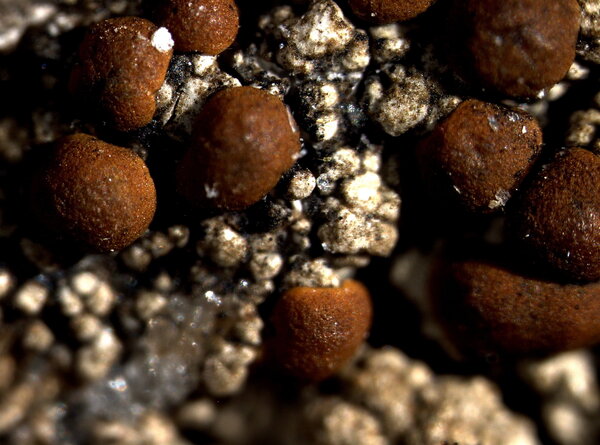Protoblastenia siebenhaariana (Körb.) J. Steiner var. siebenhaariana
Verh. K.K. zool.-bot. Ges. Wien, 61: 48, 1911. Basionym: Biatora siebenhaariana Körb. - Syst. Lich. Germ.: 207, 1855.
Synonyms: Blastenia siebenhaariana (Körb.) Lettau; Protoblastenia rupestris subsp. siebenhaariana (Körb.) A.L. Sm.
Description: Thallus crustose, episubstratic, rather thick, smooth to uneven, rimose to areolate, whitish to pale brown, the areoles smooth, contiguous, not imbricate, flat to weakly convex, up to 0.5 mm wide, forming a compact crust. Apothecia biatorine, not constricted at base, (0.4-)0.7-1.5(-2) mm across, with an ochraceous orange to finally brown to dark brown, convex, smooth disc and a very thin, soon excluded proper margin. Proper exciple poorly developed, of branched hyphae, colourless to orange-brown, patchily pigmented; epithecium orange-brown to brown, 10-20 µm high, with granular crystals reacting K+ purple-red, N-; hymenium colourless to pale orange, 50-135 µm high; paraphyses coherent, sparingly branched and anastomosing, 2.5-4 µm thick, the apical cells hardly swollen, up to 5 µm wide; hypothecium brown or dark reddish brown, patchily pigmented. Asci 8-spored, clavate, with a well-developed, amyloid tholus containing a more intensely amyloid, indistinct tube structure, without an ocular chamber, approximating the Porpidia- or Psora-types. Ascospores 1-celled, hyaline, ellipsoid to ovoid, thin-walled, (6-)7-11(-14) x (3-)4-6(-7) µm, without a distinct perispore. Photobiont chlorococcoid. Spot tests: thallus K-, C-, KC-, P-; apothecia K+ purple-red. Chemistry: apothecia with anthraquinones, mainly parietin.
Growth form: Crustose
Substrata: rocks
Photobiont: green algae other than Trentepohlia
Reproductive strategy: mainly sexual
Commonnes-rarity: (info)
Alpine belt: rather rare
Subalpine belt: rare
Montane belt: extremely rare
Dry submediterranean belt: absent
Humid submediterranean belt: absent
Padanian area: absent
pH of the substrata:
1 2 3 4 5
Solar irradiation:
1 2 3 4 5
Aridity:
1 2 3 4 5
Eutrophication:
1 2 3 4 5
Poleotolerance:
0 1 2 3
Altitudinal distribution:
1 2 3 4 5 6
Rarity
absent
extremely rare
very rare
rare
rather rare
rather common
common
very common
extremely common
Loading data...
Occurrence data
Predictive map
Growth form: Crustose
Substrata: rocks
Photobiont: green algae other than Trentepohlia
Reproductive strategy: mainly sexual
Commonnes-rarity: (info)
Alpine belt: rather rare
Subalpine belt: rare
Montane belt: extremely rare
Dry submediterranean belt: absent
Humid submediterranean belt: absent
Padanian area: absent
pH of the substrata:
| 1 | 2 | 3 | 4 | 5 |
Solar irradiation:
| 1 | 2 | 3 | 4 | 5 |
Aridity:
| 1 | 2 | 3 | 4 | 5 |
Eutrophication:
| 1 | 2 | 3 | 4 | 5 |
Poleotolerance:
| 0 | 1 | 2 | 3 |
Altitudinal distribution:
| 1 | 2 | 3 | 4 | 5 | 6 |
Rarity
absent
extremely rare
very rare
rare
rather rare
rather common
common
very common
extremely common
Loading data...
Occurrence data
Predictive map


